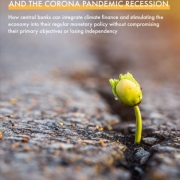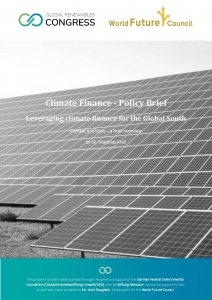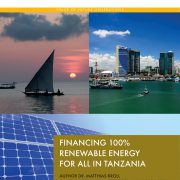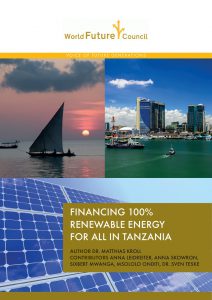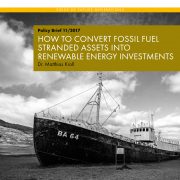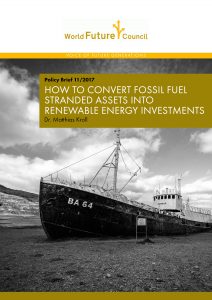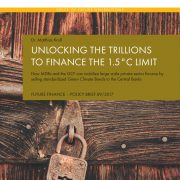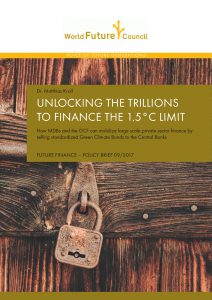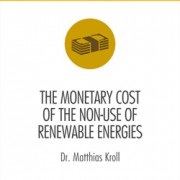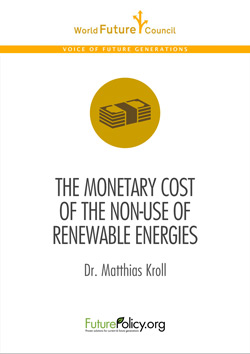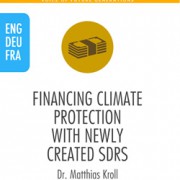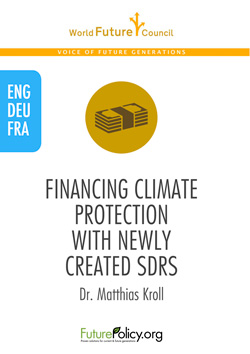Tag Archive for: Climate Finance
Policy Brief: “Leveraging climate finance for the Global South. Context and tools – a brief overview”
Abstract
Climate finance in the Global South differs in various ways from the conditions in the industrialised world. These differences result in several obstacles which could be identified as one reason why the annual global renewable energy investments stagnated at a level around $300 billion since 2011, while an estimated number in an area of $2.4trillion is necessary to meet the 1.5°C limit of the Paris Agreement.
The bulk of these $300bn Renewable Energy (RE)-investments happened in high-income countries and China while only a very small part was invested into renewables in the Global South. Only 0.1% of total clean energy investments accumulated in the 31 poorest countries between 2009 and 2018. The main barrier to more RE-investments in the Global South is not a lack of (green) investment capital, but rather a lack of bankable projects.
This policy brief provides an overall assessment of climate finance mechanisms in the context of domestic and international finance in the Global South. Furthermore, it will give a prospect on a possible new finance mechanism if at least a few relevant central banks from the industrialised world will engage in the global climate finance issue. Such an engagement could be the basis to facilitate the needed RE-investments to stop climate change at 1.5°C.
Ambition For the Future – 100%RE to Accelerate Sustainable Development
Abstract
While the Agenda 2030 set the aim to keep global climate change to 1.5°C, existing policy measures, legal frameworks and initiatives are nowhere near these ambitions. However, research indicates that this target is achievable if we fully decarbonize our economy and society by no later than 2050. This ultimately means a transition to 100% renewable energy (RE) and a complete phase out of fossil fuels.
Therefore, this report highlights how 100% RE is a prerequisite for achieving justice and dignity for present and future generations, including a mechanism to finance this transition. The links between these elements – namely regenerative cities, sustainable agriculture, peace and disarmament and education for sustainable development – and 100% RE underpin the reasoning and strong necessity to transition to 100% RE. The clarification of these interrelationships enables a comprehensive approach to climate action and policy design that disrupts single silo thinking while leaving no one behind.
Financing 100% Renewable Energy for all in Tanzania
Abstract
Tanzania is endowed with abundant, high quality renewable resources which could play a significant role in meeting the country’s energy demand and propel living standards to the level of industrialized countries by 2050. This means however, that an average annual investment of US$9 billion is needed, to reach the 100% RE. In order to provide 100% Renewable Energy which is affordable for all, additional financial means are necessary. A new model focusing on an agreement between MDBs and Central Banks from the industrialized world outlines how to unlock this necessary investment to implement 100%RE for all by 2050.
How to convert fossil fuel stranded assets into RE investments
Abstract
To comply with the 1.5°C limit agreed in Paris, a significant fraction of fossil fuel resources cannot be used for energy production. The loss of value of fossil fuels such as oil, gas and coal will cause considerable uncertainty and instability on the financial markets. Also, the unavoidable transformation of energy companies towards renewable energy generation will be even harder when they are weakened by the accelerated depreciation of their fossil fuel assets.
Therefore, a new financial instrument is required to enable energy companies to convert their de facto “stranded” fossil fuel reserves into renewable energy (RE) assets. Since assets already threatened by “stranding” can only be sold in the private financial markets at a minimum residual value, private actors can be excluded as feasible buyers.
Passing on the losses to taxpayers would be neither politically nor financially realistic. The only institutions that have the economic potential to implement a “climate bailout” are Central Banks, just as they have done in the banking crisis since 2008.
Unlocking the trillions to finance the 1.5°C limit
Abstract
In order to meet the +1.5 ° C limit specified in the Paris Agreement, a shift of the global energy supply to 100% renewable energy is necessary at the latest by 2050. Such a process requires annual investments in the order of $1.5 to $2 trillion. Although the costs of renewable energies (RE) have recently declined sharply and further downturns can be expected, current investments are stagnating at approximately $250 billion. Therefore, additional monetary support must be provided, in order to bring the global expansion of RE to the necessary scale.
This report outlines how it can be established through cooperation between the non-industrialized countries, the Multilateral Development Banks (MDBs), the Green Climate Fund (GCF), or other financial institutions, and the Central Banks of the industrialized countries.
The Monetary Cost of the Non-Use of Renewable Energies (Update 2017)
Abstract
It is often claimed that renewables are still too costly and not yet competitive with conventional energy sources. But what costs are incurred when renewable energies are not used? Every day during which potential renewable energy sources are not utilised but exhaustible fossil fuels burnt instead speeds up the depletion of these non-renewable fuels. Using burnt fossil fuels for nonenergy related purposes (e.g. in the petro-chemical industry) in the future is obviously impossible. Thus, their burning – whenever they could have been replaced by renewables – is costly capital destruction. This study concludes that, estimated conservatively, the future usage loss resulting from our current oil, gas and coal consumption is between 3.2 and 3.4 trillion US Dollars per year.
Financing climate protection with newly created SDRs
Abstract
The centrepiece of the WFC proposal is the establishment of a financing tool that uses the ability of the IMF to create new international reserve money in the shape of Special Drawing Rights (SDRs). The intention is to support financing facilities such as the new Green Climate Fund established at the COP 16 in Cancun. The IMF member states can decide on the issuance of new SDRs. These are usually distributed to them proportionate to their quota shares. Pursuant to the agreement on the formation of the new Green Climate Fund, member states should agree in advance to commit all or most of the new SDRs to this Fund. A small portion (e.g. 10% – 20%) could be claimed by the member states for the financing of specific climate protection projects.

